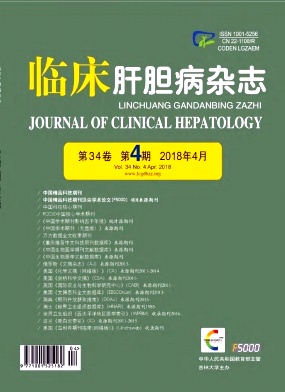|
[1]LEUNG TM, NIETO N.CYP2E1 and oxidant stress in alcoholic and non-alcoholic fatty liver disease[J].J Hepatol, 2013, 58 (2) :395-398.
|
|
[2]LEAMY AK, EGNATCHIK RA, YOUNG JD.Molecular mechanisms and the role of saturated fatty acids in the progression of nonalcoholic fatty liver disease[J].Prog Lipid Res, 2013, 52 (1) :165-174.
|
|
[3]ZHOU T, ZHANG SS, YU Q.Clinical cohort study on non-alcoholic fatty liver disease by regulating liver and spleen[J].Beijing J Tradit Chin Med, 2013, 32 (6) :403-405. (in Chinese) 周滔, 张声生, 郁强.调肝理脾法治疗非酒精性脂肪肝的临床队列研究[J].北京中医药, 2013, 32 (6) :403-405.
|
|
[4]ZHOU T, ZHANG SS, CHEN J.Analysis of 120 cases of nonalcoholic fatty liver unit syndrome and the clinical effect of Jianpi Qinggan recipe[J].Chin J Integr Tradit West Med Liver Dis, 2009, 19 (4) :209-210. (in Chinese) 周滔, 张声生, 陈誩.120例非酒精性脂肪肝单元证特点分析与健脾清肝方临床疗效[J].中西医结合肝病杂志, 2009, 19 (4) :209-210.
|
|
[5]SINGH R, KAUSHIK S, WANG Y, et al.Autophagy regulates lipid m etabolism[J].Nature, 2009, 458 (7242) :1131-1135.
|
|
[6]WU X, ZHANG L, GURLEY E, et al.Prevention of free fatty acid-induced hepatic lipotoxicity by 18beta-glycytthetinic acid through lysosomal and mitochondrial pathways[J].Hepatology, 2008, 47 (6) :1905-1915.
|
|
[7]DIEHL A, GOODMAN Z, ISHAK K.Alcohollike liver disease in nonalcoholics.A clinical and histologic comparison with alcoholinduced liver injury[J].Gastroenterology, 1998, 95 (4) :1056-1062.
|
|
[8]WANG TL, LIU X, ZHOU YP, et al.A semiquantitative scoring system for assessmeng of hepatic inflammation and fibrosis in chronic viral hepatitis[J].Chin J Hepatol, 1998, 6 (4) :195-197. (in Chinese) 王泰龄, 刘霞, 周元平, 等.慢性肝炎炎症活动度及纤维化程度计分方案[J].中华肝脏病杂志, 1998, 6 (4) :195-197.
|
|
[9]CHOI J, JUNG W, KOO JS.Expression of autophagy-related markers Beclin1, light chain 3A, light chain 3B and P62 according to the molecular subtype of breast cancer[J].Histopsthology, 2013, 62 (2) :275-286.
|
|
[10]KIM YC, GUAN KL.m TOR:a pharmacologic target for autophagy regulation[J].J Clin Invest, 2015, 125 (1) :25-32.
|
|
[11]WANG EY, BIALA AK, GORDON JW, et al.Autophagy in the heart:too much of a good thing?[J].J Cardiovasc Pharmacol, 2012, 60 (2) :110-117.
|
|
[12]MIZUSHIMA N, KOMATSU M.Autophagy:renovation of cells and tissues[J].Cell, 2011, 147 (4) :728-741.
|
|
[13]ROBINET P, RITCHEY B, SMITH JD.Physiological difference in autophagic flux in macrophages from 2 mouse strains regulates cholesterol ester metabolism[J].Arterioscler Thromb Vasc Biol, 2013, 33 (5) :903-910.
|
|
[14]LIU K, CZAJA MJ.Regulation of lipid stores and metabolism by lipophagy[J].Cell Death Differ, 2013, 20 (1) :3-11.
|
|
[15]ZHANG J, PENG XM, LIU ZQ.Pathogenic mechanism of endoplasmic reticulum stress in nonalcoholic fatty liver disease[J].Chin J Immunol, 2017, 33 (7) :1112-1114. (in Chinese) 张娟, 彭晓蔓, 刘朝奇.内质网应激在非酒精性脂肪性肝炎中的致病机制[J].中国免疫学杂志, 2017, 33 (7) :1112-1114.
|
|
[16]YANG L, LI P, FU S, et al.Defective hepatic antophagy in obesity promotes ER stress and causes insulin resistance[J].Cell Metab, 2010, 11 (6) :467-478.
|
|
[17]PAPACKOVA Z, DANKOVA H, PALENICKOVA E, et al.Effect of short-and long-term high-fat feeding on autophagy flux and lysosomal activity in rat liver[J].Physiol Res, 2012, 61 (Suppl2) :s67-s76.
|
|
[18]MARTINEZ-VICENTE M, TALLOCZY Z, WONG E, et al.Cargo recognition failure is responsible for inefficient autophagy in Huntington’s disease[J].Nat Neurosci, 2010, 13 (5) :567-576.
|
|
[19]CZAJA MJ.Autophagy in health and disease.2.Regulation of lipid metabolism and storage by autophagy:pathophysiological implications[J].Am J Physiol Cell Physiol, 2010, 298 (5) :c973-c978.
|
|
[20]WANG KY, LI XL, CAI YQ, et al.Research progress of the regulation function of autophagy in drug-induced hepatotoxicity[J].Chin J Clin Pharmacol Ther, 2017, 22 (1) :100-103. (in Chinese) 王楷扬, 李小丽, 蔡永青.自噬对药物肝毒性调控作用的研究进展[J].中国临床药理学与治疗学, 2017, 22 (1) :100-103.
|
|
[21]YAN R, NIU CY, YU L, et al.Interaction between autophagy and lipid metabolism in cell models of nonalcoholic fatty liver disease[J].J Clin Hepatol, 2017, 33 (10) :1981-1986. (in Chinese) .闫蓉, 牛春燕, 于璐, 等.非酒精性脂肪性肝病细胞模型中自噬与脂质代谢的相互调节[J].临床肝胆病杂志, 2017, 33 (10) :1981-1986.
|
|
[22]SHIBATA M, YOSHIMURA K, FURUYA N, et al.The MAP1-LC3conjugation system is involved in lipid droplet formation[J].Biochem Biophys Res Commun, 2009, 382 (2) :419-423.
|
|
[23]MARTINET W, SCHRIJVERS DM, TIMMERMANS JP, et al.Immunohisto-chemical analysis of macroautophagy:recommendations and limitations[J].Autophagy, 2013, 9 (3) :386-402.
|
|
[24]LIANG C.Negative regulation of autophagy[J].Cell Death Differ, 2010, 17 (12) :1807-1815.
|
|
[25]ZHU D, SUN TT, CHEN LY.Treatment of nonalcoholic fatty liver disease in Jingui Yaolue[J].J Changchun Univ Chin Med, 2016, 32 (2) :423-429. (in Chinese) 朱丹, 孙婷婷, 陈兰羽.《金匮要略》诸方治疗非酒精性脂肪性肝病进展[J].长春中医药大学学报, 2016, 32 (2) :423-429.
|
|
[26]HUANG LQ, HUANG GH, JI YX, et al.The correlation between autophagy and the"Yin and Yang"and"Qi"of traditional Chinese Medicine[J].Liaoning J Tradit Chin Med, 2014, 41 (6) :1147-1149. (in Chinese) 黄丽琼, 黄贵华, 纪云西, 等.细胞自噬与中医“阴阳”及“气”理论相关性探讨[J].辽宁中医杂志, 2014, 41 (6) :1147-1149.
|
|
[27]LI YX, AO HQ.Explore the relevance of autophagy and liver dispersion function from the microscopic point of view[J].Liaoning J Tradit Chin Med, 2016, 18 (2) :45-47. (in Chinese) 黎颖贤, 敖海清.从微观角度探究细胞自噬与肝主疏泄功能相关性[J].辽宁中医药大学学报, 2016, 18 (2) :45-47.
|
|
[28]JIANG WX, WANG YC, CHANG C.Discussion on Chinese medicine in regulation of autophagy[J].J Tradit Chin Med, 2017, 58 (18) :1566-1568. (in Chinese) 姜文秀, 王英超, 常诚.中医药调节细胞自噬刍议[J].中医杂志, 2017, 58 (18) :1566-1568.
|








 下载:
下载:








 DownLoad:
DownLoad: